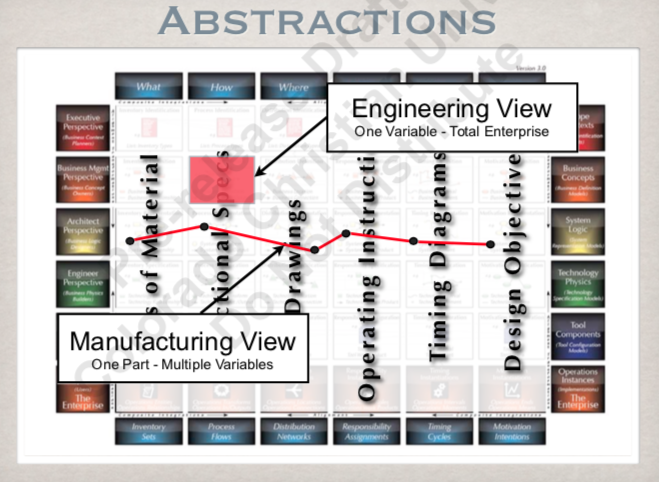Blog
Zachman International & FEAC Institute
As a long-practicing enterprise architect looking towards the profession's future, it's evident that the role is evolving rapidly, influenced by several key trends and technological advancements. One of the most significant drivers of change is the increasing adoption of cloud computing and the shift towards cloud-native architectures. According to Gartner, by 2025, over 85% of organizations will embrace a cloud-first principle, and 95% of new digital workloads will be deployed on cloud-native platforms, up from 30% in 2021 (Gartner, 2021[1]). This shift demands enterprise architects to be proficient in cloud technologies and adept at integrating and managing multi-cloud and hybrid environments.
[1] https://www.gartner.com/en/newsroom/press-releases/2021-11-10-gartner-says-cloud-will-be-the-centerpiece-of-new-digital-experiences
"You can't manage well what you can't see coherently."-Doucet, Gøtze, Saha & BernardIn the dynamic landscape of modern business, enterprise architecture (EA) has become increasingly pivotal in steering organizations toward strategic success. As an Enterprise Architect, I see several benefits the practice of EA brings to the table, particularly in fostering coherency management and enterprise transparency—two critical pillars for informed decision-making.
Enterprise architecture (EA) is critical in the federated information technology space by providing a structured framework and methodology for aligning an organization's IT capabilities with its business goals and objectives. Enterprise architecture becomes even more essential in a federated IT environment where different departments or business units within an organization may have a degree of autonomy over their IT systems and resources. Here's how EA contributes to the success of a federated IT landscape:
In an era where digital transformation is not just a buzzword but a central tenet to organizational longevity, the enterprise architect (EA) has transitioned from being a back-office role to a critical advisor to leadership. Their relevance in steering the company's strategic trajectory is paramount. Here's my perspective:
As professionals, we understand and appreciate the need for continual professional development (CPD). Associations, training organizations, etc. exist to help facilitate this need. However, one of the most important aspects of a well-balanced approach to CPD is having access to a diversity of thought.
Relative to Dewey's conceptual innovations, in addition to his observation that the secret to the whole thing lies in the coding and classification of the data, Dewey identified and formalized the Process orientation in the late '60s long before Mike Hammer and Jim Champy popularized the concepts of Process Reengineering in their 1993 book.
To return to the basic point ... the kind of descriptive representations (models) you need for engineering are different from the descriptive representations (models) you need for manufacturing.
Architecture: AbstractionsYou can classify the set descriptive representations of anything (buildings, airplanes, locomotives, battleships, computers, etc.) in a two dimensional classification structure, a "schema".
Architecture is a SET of Descriptive Representations.I the object you are trying to create is simple, you can see the whole thing at the level of definition required to create it ... like a log cabin ... or a computer program ... you don't need Architecture. All you need is a tool, like an axe of a compiler or something and some raw material like a forest, or some data or something, and some time, then build log cabins or write computer programs.
I think before we can define Enterprise Architecture, we need to ask ourselves the first question: "what is Architecture?"Architecture ... what is it?Some people think the Roman Coliseum is Architecture. This is a COMMON MISCONCEPTION!Notice: This same mis-conception about Enterprises is what leads people to misconstrue Enterprise Architecture as being big, monolithic, static, inflexible and unachievable ... and it takes too long and costs too much!
In the Information Age, the characteristics we understand to date are complexity and change. The customer wants a product specific to his or her specification... a custom product. The customer is a market of one. And, the customer may not even know what they want until they want it and then they want it now... immediately. And, if you can't produce to those requirements, click!
My goodness! I'm so sorry to take so long with another blog! I'll bet this year is the most people we have Zachman Certified ever! HUNDREDS of folks this year so far!
Connect with us
15954 Jackson Creek Pkwy
Suite B463
Monument, CO 90132
-
dummyZACHMAN: (818) 244-3763
-
dummyFEAC: (703) 836-1002
-
dummy












